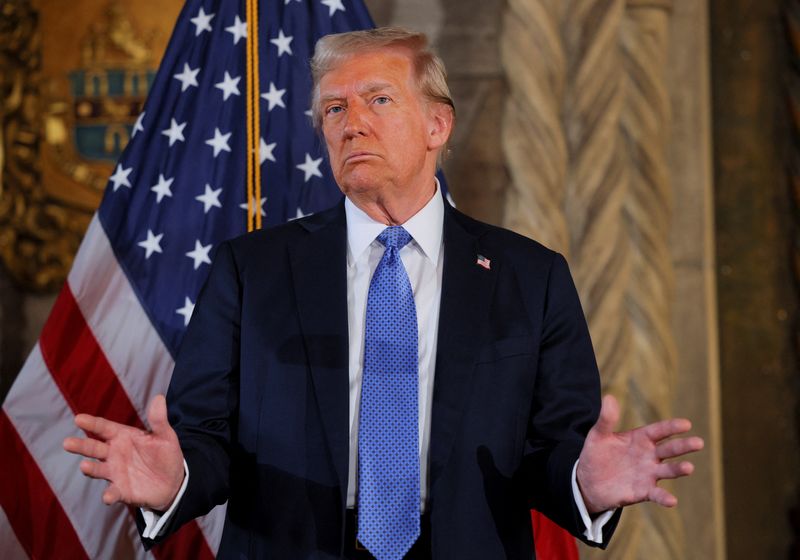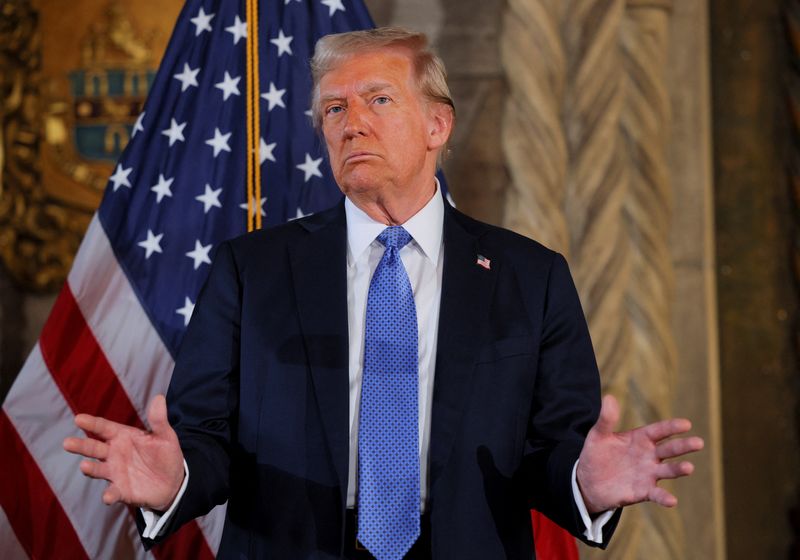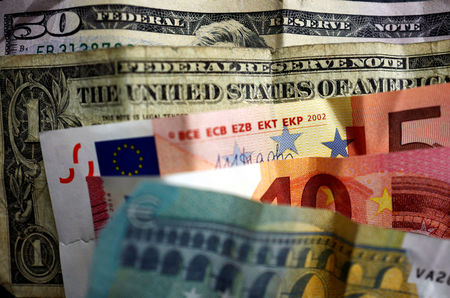
(Reuters) -U.S. President-elect Donald Trump said on Friday that the European Union, already the biggest buyer of U.S. energy, should step up U.S. oil and gas imports or face tariffs on the bloc’s exports that include goods such as cars and machinery.
The EU already buys the lion’s share of U.S. oil and gas exports, according to U.S. government data.
No extra volumes are currently available as the United States is exporting at capacity, but Trump has pledged to further grow the country’s oil and gas production.
“I told the European Union that they must make up their tremendous deficit with the United States by the large-scale purchase of our oil and gas,” Trump said in a post on Truth Social.
“Otherwise, it is TARIFFS all the way!!!,” he added.
The European Commission said it was ready to discuss with Trump how to strengthen what it described as an already strong relationship, including in the energy sector.
“The EU is committed to phasing out energy imports from Russia and diversifying our sources of supply,” a spokesperson said.
The United States already supplied 47% of the European Union’s LNG imports and 17% of its oil imports in the first quarter of 2024, according to data from EU statistics office Eurostat.
Trump, who takes office on Jan. 20, has vowed to impose tariffs on most if not all imports, and has said Europe would pay a heavy price for having run a large trade surplus with the U.S. for decades.
Trump has repeatedly highlighted the U.S. trade deficit for goods, but not trade as a whole. EU exports are dominated by Germany with key goods being cars, machinery and chemicals.
The U.S. had a goods trade deficit with the EU of 155.8 billion euros ($161.9 billion) last year. However, in services it had a surplus of 104 billion euros, Eurostat data shows.
Trump has already pledged hefty tariffs on three of the United States’ largest trading partners – Canada, Mexico and China.
Most European oil refiners and gas firms are private and the governments have little say on where their purchases are coming from unless authorities impose sanctions or tariffs. The owners usually buy their resources based on price and efficiencies.
The EU has steeply increased purchases of U.S. oil and gas following the block’s decision to impose sanctions and cut reliance on Russian energy after Moscow invaded Ukraine in 2022.
The United States has grown to become the largest oil producer in recent years with output of over 20 million barrels per day (bpd) of oil liquids or a fifth of global demand. It exports all the crude it cannot consume at home.
U.S. crude exports to Europe stand at around two million bpd, representing over half of U.S. total exports with the rest going to Asia.
The Netherlands, Spain, France, Germany, Italy, Denmark, and Sweden are the biggest importers, according to the U.S. government data.
“Europe is taking close to its maximum capacity for U.S. crude, meaning there is little scope for stronger imports next year,” said Richard Price, oil markets analyst at Energy Aspects. He also said refinery closures in Europe in 2025 won’t help increase imports.
The United States is also the world’s biggest gas producer and consumer with output of over 103 billion cubic feet per day (bcfd).
The U.S. government projects that U.S. exports of liquefied gas (LNG) will average 12 bcfd in 2024. In 2023, Europe accounted for 66% of U.S. LNG exports, with the UK, France, Spain and Germany being the main destinations.
U.S. oil production growth will likely be slow until 2030, according to the International Energy Agency (IEA).
Gas output could meanwhile rise further to meet record U.S. domestic demand and LNG exports could also increase if the government approves more LNG terminals.

The EU imported around 2 bcfd of Russian LNG in 2024 and it could move to ban those supplies and seek replacement from other sources, said Alex Froley, LNG analyst at ICIS.
($1 = 0.9623 euros)
This post is originally published on INVESTING.


